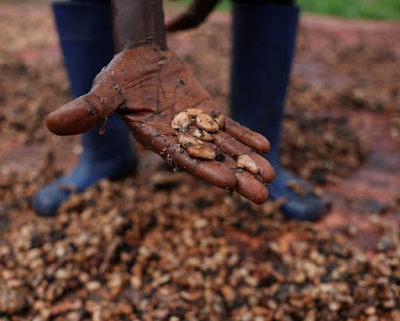Para pesquisador, interesses econômicos estão por trás de grande parte das termelétricas
Uma audiência pública sobre a instalação de uma termelétrica a gás natural em Samambaia (DF), a cerca de 35 quilômetros da praça dos Três Poderes, foi suspensa pela Justiça em março porque a população não teve tempo hábil para ser informada. Um mês antes, duas empresas desistiram de construir uma usina a carvão em Candiota e Hulha Negra, no Rio Grande do Sul, após o empreendimento ser questionado judicialmente.
Os dois casos geram intensos debates sobre os impactos ambientais locais desses empreendimentos e sobre a emissão de gases de efeito estufa, responsáveis pelo aquecimento global. E reforçam o questionamento: por que o Brasil ainda investe em termelétricas movidas a combustíveis fósseis, como gás natural e carvão, em plena crise climática?
O principal argumento a favor das termelétricas é a segurança energética. Ou seja, elas poderiam ser acionadas a qualquer momento, independentemente das condições climáticas, como possível falta de água, vento ou sol. Essa foi a justificativa usada pelo Ministério de Minas e Energia (MME) durante o lançamento do Plano Decenal de Expansão de Energia 2034 na defesa do "fortalecimento da geração termelétrica".
Um estudo publicado em dezembro pela ONG Instituto de Energia e Meio Ambiente (IEMA) mostrou que as 67 termelétricas fósseis conectadas ao Sistema Interligado Nacional (SIN) emitiram, em 2023, 17,9 milhões de toneladas de gás carbônico (CO₂), o principal responsável pelo aquecimento global.
Para se ter uma ideia da magnitude dessas emissões, alertou a pesquisadora do IEMA, Raíssa Gomes, as termelétricas fósseis lançaram na atmosfera mais gás carbônico do que o município de São Paulo. Segundo dados do Sistema de Estimativas de Emissões e Remoções de Gases de Efeito Estufa (SEEG), os paulistanos foram responsáveis por emitir 14,5 milhões de toneladas do gás em 2023.
"Ou seja, apenas as térmicas fósseis do SIN emitiram mais gases de efeito estufa do que a maior cidade do país, com seus mais de 11 milhões de habitantes e intensa atividade econômica", comparou a pesquisadora.
Entre lobbies e jabutis
Para o físico especializado em mudanças climáticas e pesquisador do Instituto ClimaInfo, Shigueo Watanabe Jr, outras alternativas poderiam reduzir a necessidade das termelétricas, como a "repotencialização das hidrelétricas". "A maior parte das hidrelétricas do Sudeste foram construídas na década de 1970, 1980. Mas hoje a situação é diferente. Se você trocar as turbinas, tem um ganho potencial de energia e de potência sem mexer na altura do reservatório, sem mexer em nada da parte física", disse.
Além disso, segundo o especialista, também há previsibilidade em relação ao vento e ao sol. "Se eu fosse um planejador energético, estaria muito mais preocupado com o preço do gás. A Rússia invade a Ucrânia, e o preço do gás dispara. Aí o Catar fala assim: 'Não, tá muito alto, eu vou bombar mais gás, o preço do gás cai.' É totalmente imprevisível", avaliou.
Para o pesquisador, os interesses econômicos estão por trás de grande parte das termelétricas. "Existe um lobby muito forte para alavancar mais ainda o gás natural. Toda vez que você tem alguma obra de uma termelétrica, há vários interesses políticos e econômicos e um lobby muito forte dentro do Congresso e dentro dos ministérios para poder ter mais gás, mais termelétrica."
Esse lobby pode ser visto em dois jabutis colocados em leis na área de energia – o termo é usado para designar um apêndice incluído em um projeto que trata de tema diferente do assunto principal. Em 2021, o Congresso Nacional aprovou uma lei que viabilizou a privatização da Eletrobras. Mas os congressistas colocaram no texto a obrigação da contratação de 8 gigawatt (GW) de eletricidade das termelétricas a gás natural sem infraestrutura de distribuição.
Já no projeto de lei que discutiu o marco legal para a geração de energia eólica offshore (em alto mar), os parlamentares acrescentaram a obrigação de contratar 4,25 GW de usinas termelétricas a gás natural. Eles também prorrogaram os contratos das usinas a carvão de 2040 para 2050. Em janeiro, o presidente Luiz Inácio Lula da Silva sancionou o projeto, mas vetou os jabutis, alegando que iam na contramão da lei sancionada, por serem matrizes mais poluidoras, caras e ineficientes. O Congresso ainda pode derrubar os vetos presidenciais.
Crise de 2001
A história das termelétricas atuais está relacionada com a crise de 2001, quando houve forte escassez de chuva, comprometendo os reservatórios de água das usinas hidrelétricas e o fornecimento de energia. "A maior parte das termelétricas que estão em operação hoje vieram do apagão que teve no governo Fernando Henrique. Eles criaram um programa prioritário de térmicas, que era basicamente térmicas a gás. Naquela época já se falava em aquecimento global, mas nada parecido com o que se fala hoje", lembrou Watanabe Jr.
De acordo com Raíssa Gomes, com a expansão das fontes renováveis como a solar e a eólica, há uma transição em curso para que as térmicas fósseis operem cada vez mais de forma pontual, apenas em períodos de maior demanda ou baixa geração renovável. "Essa transição é fundamental, pois as termelétricas fósseis, ao contrário das fontes renováveis, são altamente emissoras de gases de efeito estufa e de emissões atmosféricas locais como óxidos de nitrogênio, enxofre, monóxido de carbono e material particulado."
Além disso, segundo a pesquisadora, dependendo do sistema de resfriamento adotado, as usinas podem ter um elevado consumo de água, o que agrava a pressão sobre os recursos hídricos. "Soma-se a isso o fato de que a geração térmica, especialmente com combustíveis fósseis, tende a ser mais cara, contribuindo para o aumento nas tarifas de energia elétrica."
A questão climática no licenciamento
A Usina Nova Seival, projetada para ser instalada em Candiota e Hulha Negra, no Rio Grande do Sul, consumiria cerca de 12,6 mil toneladas de carvão por dia. Além disso, usaria água equivalente ao consumo diário de um município de 230 mil habitantes.
Repotencialização das atuais hidrelétricas é uma alternativa às termelétricasOrganizações como o Instituto Gaúcho de Estudos Ambientais (InGá) e a Associação Gaúcha de Proteção ao Ambiente Natural (Agapan) entraram com uma ação na Justiça fazendo uma série de questionamentos: solicitaram audiências públicas, mostraram inconsistências nos estudos e pediram a suspensão do licenciamento ambiental.
Em fevereiro, a Energia da Campanha Ltda e a Copelmi Mineração Ltda desistiram do empreendimento. Mesmo assim, o Tribunal Regional Federal da 4ª Região (TRF-4) confirmou um pedido das entidades: que o Instituto Brasileiro do Meio Ambiente e dos Recursos Naturais Renováveis (Ibama) considere os impactos climáticos nos próximos licenciamentos ambientais.
"A decisão inclui o componente climático no licenciamento ambiental de termelétricas no Rio Grande do Sul. Ela determina e obriga que, a partir de agora, isso seja sempre observado pelo Ibama. Isso significa a inclusão das diretrizes da Política Nacional da Mudança do Clima e da Política Gaúcha da Mudança do Clima", explicou o advogado da InGá e Agapan, Marcelo Mossmann.
Para a pesquisadora do IEMA, Raíssa Gomes, é fundamental a avaliação das emissões de gases de efeito estufa das usinas termelétricas. "No entanto, esta análise não pode ocorrer isoladamente e tão somente no licenciamento ambiental. É essencial que se realize uma avaliação ambiental estratégica (AAE), que incorpore também aspectos locacionais – como a qualidade do ar, a capacidade de monitoramento ambiental e a disponibilidade hídrica – além de critérios socioambientais."
A pesquisadora também chamou a atenção para o número crescente de projetos de termelétricas em processo de licenciamento ambiental no país. "Estima-se que existam cerca de cem empreendimentos em diferentes fases de tramitação, sinalizando o interesse dos investidores em disputar futuros leilões. No entanto, os leilões anteriores já demonstraram falhas importantes na seleção de projetos, como a habilitação de usinas sem a licença ambiental prévia, que é um requisito mínimo para participação.




.svg.png)
.svg.png)











.svg.png)
.svg.png)















.svg.png)







